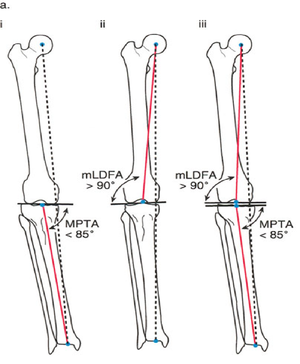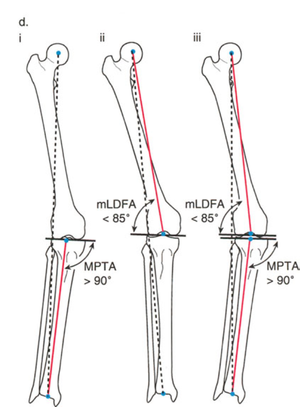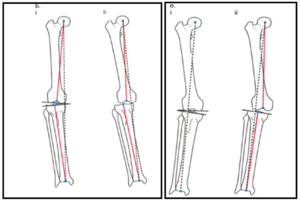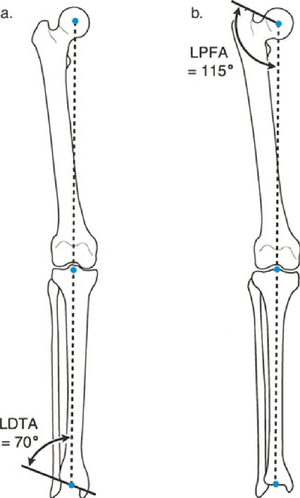- Malalignment: refers to loss of collinearity of the hip, knee & ankle in the frontal plane (MAD exceeds normal range)
- Malalignment Test (MAT): Draw mechanical axes and knee joint lines. Measure the mechanical angular parameters - mLDFA and MPTA
Video Summary[edit | edit source]
Malalignment tests[edit | edit source]
Malorientation test[edit | edit source]
Malorientation Test (MOT)
Draw mechanical axes and draw proximal femur joint lines and distal tibia joint lines. Measure the LPFA and LDTA angles. If they are not in normal range, there is malorientation in the hip joint or ankle joint or both (Fig. 7d).
Malalignment (MAT) is Malorientation (MOT) for the knee joints.
Malorientation of the ankle or hip joints usually leads to minimal or no MAD because the deformity apex is at or near the ends of the mechanical axis of the lower limb (refer Fig. 7d)




